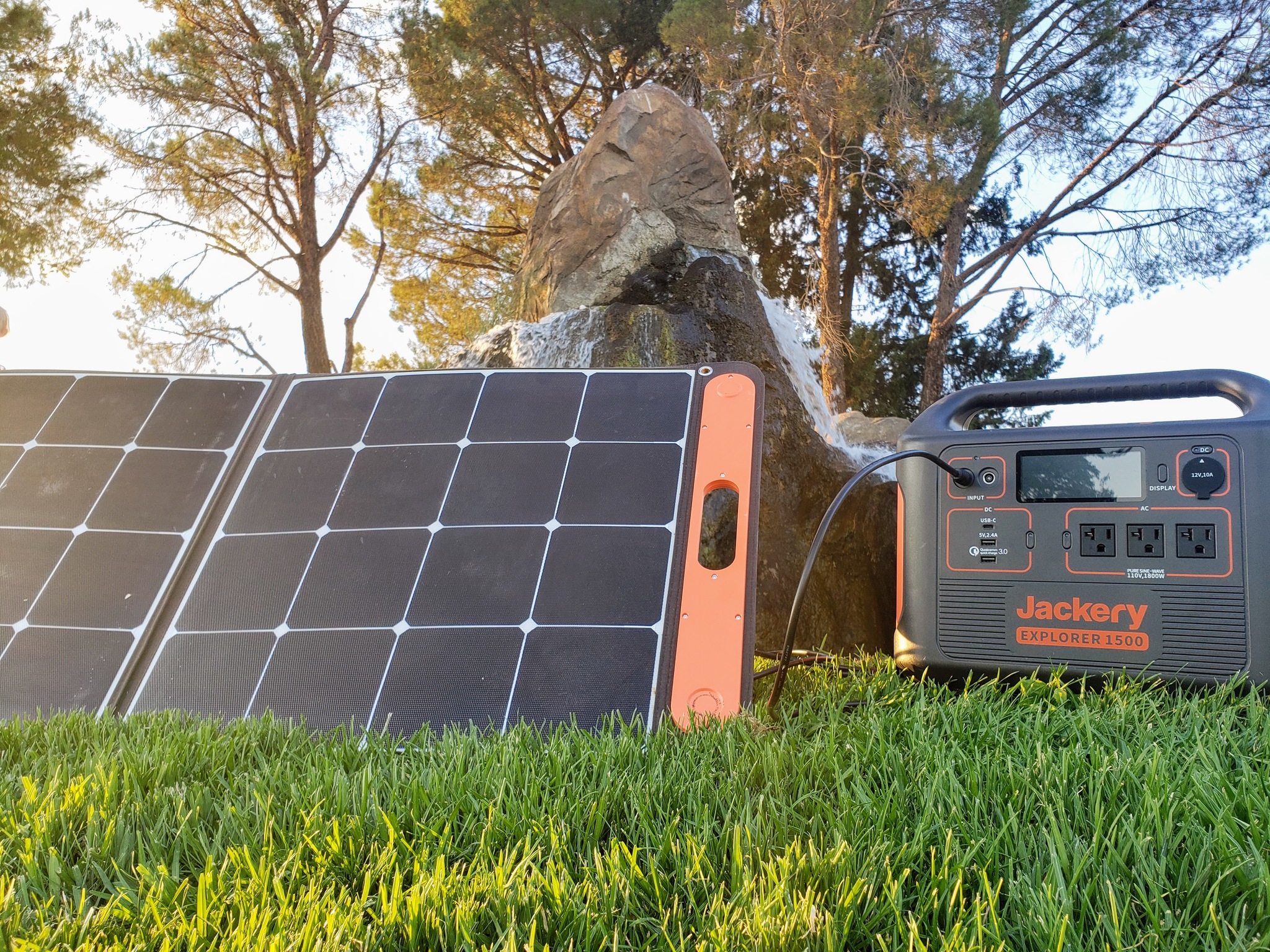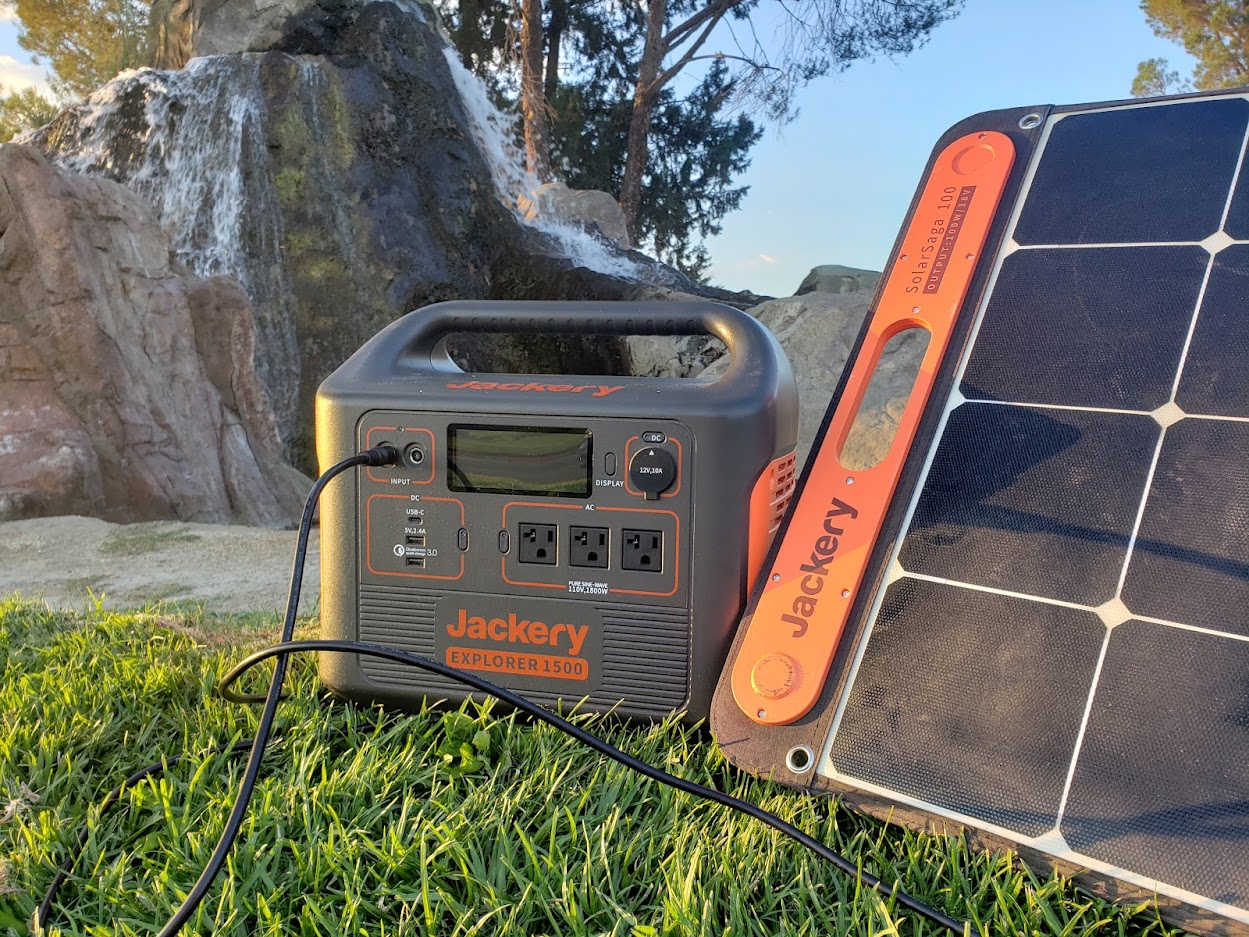The Explorer 1500 solar bundle comes with the generator itself and four SolarSaga 100w solar panels. When purchased separately, each panel costs $300, so buying the bundle saves you a few hundred dollars. The 1500 is much sought after, and while the stock on Amazon does fluctuate, the inventory at Jackery does seem very stable.
If you don't feel you will get the use out of all four solar cells, you can buy the 1500 generator and two cells separately; it will just take longer for the battery to reach full charge. Or, if you live in a cave and have no use for solar charging, nix the panels altogether.
Jackery Explorer 1500 solar generator: What's good
There is a lot to recommend the Explorer 1500 solar generator. Like its smaller sibling, the Explorer 1000 can keep your campsite fully charged and powered for a long time, but with the 1500, you have the added advantage of a high peak load. This kind of peak load allows you to keep your home appliances like fridge/freezers powered when your house loses its grid connection or lets you use an A/C unit in your camper to keep you cool for a little while. If you aim to use the Explorer 1500 as your sole emergency power source, this is perhaps the most substantial advantage vs. the 1000. The Explorer 1000 is great, but it can't keep up with those big energy devices.
While the solar side of things may take a little longer than they say on a dreary day in new New Jersey, over in Southern California, things are very different. The SolarSaga 100's can outperform Jackery's modest measures by a fair amount when they have full sun for hours. James often managed to get the full 100w out of them, sometimes up to 100w in an hour, which is extremely impressive. Having a set of panels that can exceed expectations means that the actual battery part of the 1500 takes more time to drain, giving you extra time when the sun goes down.
Suppose you aren't using the Explorer 1500 all the time for car camping or some other adventure and will be using it for emergency power. In that case, one of my favorite features is the ability of the 1500 to hold a charge for an extended period. Unlike some portable power units that may lose a good bit of charge over time, the Explorer 1500 has held up for months sitting on a shelf with a full charge and no loss. This is especially handy for the New Jersey home, where I mainly use the 1500 for emergency power in bad weather. Knowing that it will always be charged and ready — even after just sitting on a shelf for months at a time — brings along great peace of mind.

Jackery Explorer 1500 solar generator: What needs work
As mentioned above, the Explorer 1500 is great as an emergency power source, but lugging it around can be a bear at over 35lbs. even with the built-in carry handle, this thing is a beast. If you're leaving it in your car or RV or carting it in a wagon on your outings, it may be fine — but even just carrying it up the stairs or from room-to-room can be quite the chore.
Then there's the price. With a $1600 price tag, this isn't cheap — and that doesn't account for the solar panels, which can tack on another $1,000 if you opt for all four. Then again, if this is going to be your primary portable or emergency power source, that price could be well worth the juice the Explorer 1500 cranks out time and time again. At least, if you buy the bundle, you can save a little money on the entire set.
Jackery Explorer 1500 solar generator: Competition
While the Explorer 1500 is great for long weeks away, it might be too big and bulky for those who are only looking for short trips. If you only camp at weekends or want power for your beach parties, then the Explorer 1000 — the 1500's smaller sibling — is likely a better choice. While it can't keep your home refrigerator running, it can supply you with power for just about anything else you might need.
Comparable offerings include the upcoming $999 EcoFlow Delta Mini and its older sibling, the $1400 EcoFlow Delta. The Delta has a capacity of 1260Wh with an output of 1800W, while the Delta Mini rings in at 882Wh with an output of 1400W. Both are on par with the Jackery offerings and come with a slightly better display, more input options, and a mobile app that is useful for monitoring from afar.
Jackery Explorer 1500 solar generator: Should you buy it?
When it comes down to it, you either need this much beefy power, or you don't. If you're looking for a solid portable generator that you can charge up by nearly any means and will use to power almost anything with a plug — and you don't mind carting around a 35lb behemoth — then the Explorer 1500 may be just what you're after. It's great as an emergency power source or for those living the van life and wants maximum power. On the flip-side, if you're more of a car-camper or just need something to run your coffee pot on a weekend away, or spin your blender for a tailgate party, something like the Explorer 1000 may be more of the portable power you're looking for.
While the bulk of the generator and the four solar panels is a lot, I have used the Explorer 1500 more than I thought I would. The bulk of the battery sits in my car most of the day while we camp, while the four panels keep it topped up the entire sunlight hours. You can even detach a solar cell and take it with you to the beach to charge a couple of phones, leaving the rest to keep charging your battery pack. The Explorer 1500 has so many uses it's become a staple in all our trips away.

